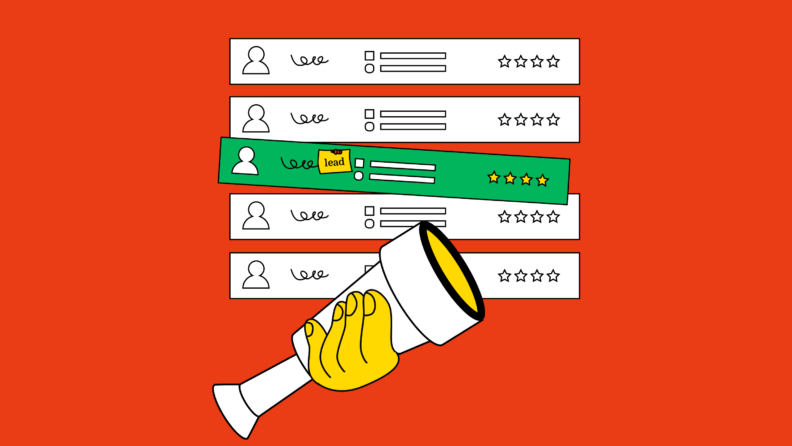If you’ve ever worked in a sales or RevOps role, you know the frustration of manual lead assignment. Leads come in fast, and before you know it, some slip through the cracks, or worse—they get assigned to the wrong rep.
It’s not just a small inconvenience; it’s lost revenue and frustrated team members. That’s where lead routing software comes in, automating the whole process and transforming how leads are managed.
Let’s dive into the specific ways this software can make your life easier and help your team hit their goals.
What Is Lead Routing Software?
Lead routing software automates the process of assigning leads to the appropriate sales rep based on rules you set.
These rules can be customized around factors like geography, lead score, or product interest. In simple terms, the software uses algorithms to figure out who on your team is the best fit to handle a particular lead, ensuring that no opportunities get lost in the shuffle.
It’s like having an air-traffic controller for your leads, making sure each one lands in the right place.
The 7 Key Benefits of Lead Routing Software

1. Improve Response Time
Sales is all about speed. Every second counts, especially when a potential customer is reaching out to you. Studies show that leads are 10 times more likely to convert when responded to within the first hour. However, 20% of organizations fail to follow up on leads at all.
Without a streamlined system, assigning leads manually can cause delays, leading to missed opportunities. Lead routing software distributes new inquiries instantly, cutting down lead response times and giving your reps the chance to engage before a competitor swoops in.
2. Provide More Accurate Data
One of the biggest challenges in sales is data management. Sales reps are often responsible for gathering, sorting, and analyzing lead information, but mistakes happen. Lead routing software not only assigns leads but also captures and organizes critical data like customer behavior and preferences.
By integrating with your CRM, it syncs data across platforms, reducing manual entry and giving you more accurate insights into what’s working and what’s not.
3. Organize Leads Efficiently
Managing leads manually is like trying to organize your inbox after a week’s vacation. Some emails (or leads) get lost, others get overlooked, and suddenly, you're playing catch-up.
Lead routing software organizes leads based on criteria like geographic region, product interest, or communication channel. This helps your team avoid double-handling or forgetting leads, keeping everything in one clear, accessible place.
4. Better Lead Prioritization and Scoring
Not all leads are created equal. Some are ready to buy right now, while others are just window shopping.
Without a proper lead scoring system in place, your reps could be wasting time on leads that aren’t a priority. Lead routing software often integrates with lead scoring tools that automatically rank leads based on factors like engagement and purchase intent.
High-priority leads can be routed to your best closers, ensuring the right reps are focused on the right leads at the right time.
5. Build Stronger Relationships with Leads
In sales, it’s all about timing and consistency. Following up too late, or not at all, can kill a potential deal. Lead routing software helps ensure that leads are contacted promptly and followed up on at critical points in the sales cycle.
It also allows for personalized outreach, whether it’s through automated email templates or reminders to reach out at specific moments. This kind of proactive communication builds trust with your leads, making them more likely to move down the sales funnel.
6. Fair and Balanced Lead Distribution
Let’s face it: without a system, lead distribution can feel like a game of luck. Some reps get swamped, while others sit idle. Lead routing software uses methods like round-robin or skills-based routing to distribute leads fairly across your team.
This not only balances the workload but also makes sure each lead is handled by the right person, minimizing the risk of burnout or missed opportunities.
7. Boost Sales Team Productivity
When you automate repetitive tasks like lead distribution, you free up your sales team to focus on what they do best—selling.
No more wasting time on admin work or manual routing. By automating these processes, lead routing software helps your team focus their energy on closing deals, increasing overall productivity.
Case Study: Magna + Default
Challenge:
Magna, a leader in the crypto industry, needed help managing inbound leads. They faced two major issues:
- Limited customization: Their current platform’s form functionality didn’t align with Magna’s branding, leading to a disjointed user experience.
- Inefficient lead routing: Leads weren’t being assigned to the right representatives, resulting in missed opportunities for proper lead qualification and segmentation.
Solution:
Magna integrated Default into their tech stack to solve these problems:
- Advanced customization: Default allowed for complete customization of forms and workflows, maintaining Magna’s brand identity.
- Automated lead routing: Default’s routing system automatically assigned leads to the right team members based on geographical location and other criteria, making the process more streamlined and accurate.
Results:
The switch to Default brought significant improvements:
- Increased efficiency: Custom forms made it easier to track and qualify leads.
- Time savings: Unqualified leads were filtered out early in the process, saving valuable team resources.
- Improved lead conversion: Default’s scheduling feature sped up the process of booking calls, resulting in higher conversion rates from inbound leads to scheduled meetings.
Best Practices for Implementing Lead Routing Software
Getting the most out of lead routing software means setting it up to fit your unique sales process. Here are some best practices:
- Custom Routing Rules: Customize lead assignments based on geography, product interest, or lead score. The more specific your routing rules, the more effective the process will be.
- Align Routing with Sales Goals: Make sure your routing criteria reflect your current sales objectives. For instance, if your goal is to close more high-value deals, prioritize routing based on lead quality.
- Track and Analyze: Use the built-in analytics to monitor how your routing process is working. If certain leads are slipping through the cracks, tweak your rules.

How to Choose the Right Lead Routing Software
There are plenty of lead routing tools on the market, so how do you choose? Look for key features like:
- CRM Integration: Ensure the software connects easily with your CRM, like HubSpot or Salesforce, to streamline your process.
- Custom Assignment Rules: You want the ability to customize routing rules to fit your sales process.
- Analytics and Reporting: Make sure the software offers detailed reporting so you can track what’s working and make adjustments.
Top tools like LeanData, LeadSquared, and HubSpot are known for their powerful routing features and seamless integrations, but here are a few other options I like:
Top Lead Routing Tools
Need expert help selecting the right Lead Management Software?
We’ve joined up with Crozdesk.com to give all our readers (yes, you!) access to Crozdesk’s software advisors. Just use the form below to share your needs, and they will contact you at no cost or commitment. You will then be matched and connected to a shortlist of vendors that best fit your company, and you can access exclusive software discounts!
Solving Your Lead Volume Problems
Lead routing software isn’t just a nice-to-have—it’s a must for any sales team dealing with a high volume of leads.
By automating the distribution process, you can improve response times, prioritize the right leads, and ultimately boost your sales team’s productivity. In a world where speed and accuracy make all the difference, lead routing software is the tool that helps you keep up with demand, and more importantly, close more deals.



